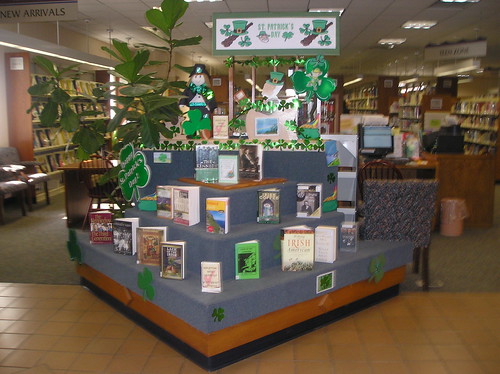
My favorite part of Web 2.0 has to be Listen NJ. I'm very likely to use this again, since it was so easy! Even better, since I'll probably be listening to books with my husband, instead of me having to pick an audio book here in the library, my husband can browse through titles online.
My least favorite part of Web 2.0 would be the din created by the sound of millions of bloggers clogging up the Internet. While I appreciate reading blogs by pundits or experts in a particular field, Technorati revealed an inane world of people who'd do better to spend their time reading than posting...
I hope the library gets more involved in RSS feeds--especially regarding new materials. I also think that being able to perform a federated search of the library's catalog and databases would be VERY useful for customers.
As for what Web 2.0 applications I share with my family: much as people in the past made their guests sit through slide shows of their vacations, I make my parents watch when videos of me have been posted to YouTube (but only when they are visiting me, as Dad is too paranoid to download software to his computer...). Unfortunately, it doesn't look like State Library of Pennsylvania offers a service comparable to ListenNJ, or I'd try to help my parents set that up (although that conversation would probably be short and unsuccessful, as Dad would object to downloading the software...).
Overall, my favorite part about completing this Web Challenge has been reading everyone else's blogs (yes, yes, I know I just called most blogs inane, but that's only when the authors are people I don't know). Its been interesting to see the pictures posted by others--especially here in Lacey. I'm glad that the blogs OCL's Web Challenge participants will remain posted for a few more weeks, as I look forward to browsing through the ones I haven't read yet.










